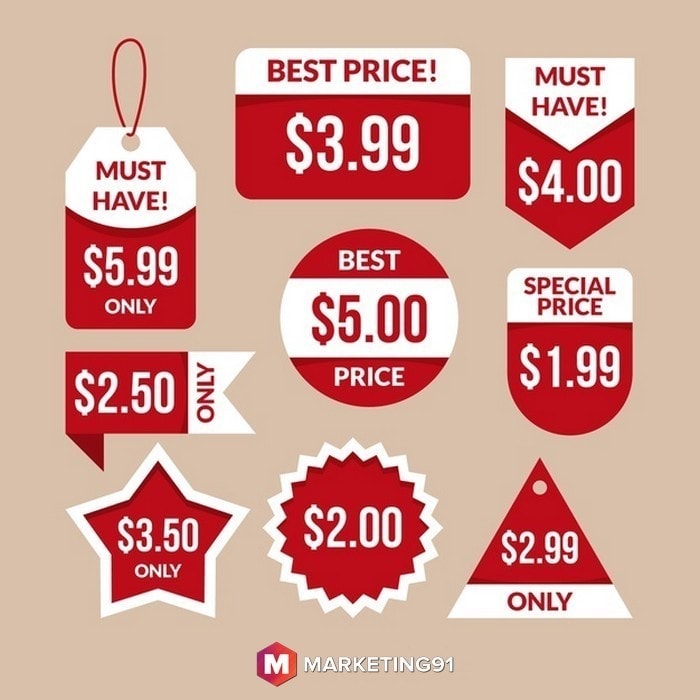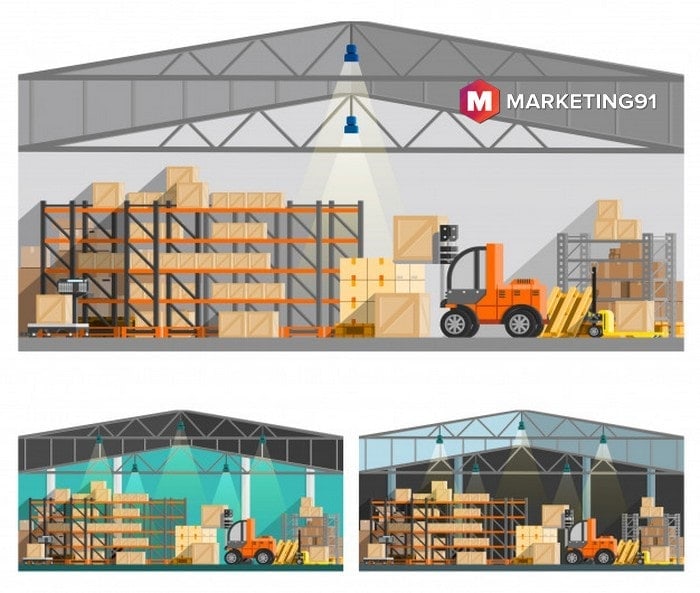Merchandise planning refers to an approach based on data to select, buy, present, and sell merchandise to consumers so that the maximum rate of investment can be achieved and consumers demand can also be satisfied.
The purpose of merchandise planning is to fulfill consumers demand by making available right merchandise at the right place, time at right prices, and in the right quantities.
It is normal to feel confused when it comes to defining and understanding merchandising planning. You will get a new definition each time you will speak to a new retailer. The meaning f merchandising planning is different for different retailers, and there is no single approach that one can use.
This is because every retailer has different strategies and goals. Even merchandising planning has a different meaning for a different retailer; it is not that complicated to understand. It is closely related to assortment planning as assortment planning is about category management of merchandises.
Want to optimize your merchandise planning strategy?
According to a 2021 report by Deloitte, retailers who integrated data analytics into their merchandise planning experienced a 5% to 10% increase in sales. Utilizing customer data and sales trends allows for more accurate demand forecasting and inventory management. (Source: Deloitte Retail Analytics Survey 2021)
Furthermore, companies implementing advanced inventory management systems saw a 20% reduction in stockouts, enhancing customer satisfaction and loyalty. Investing in technology not only streamlines operations but also boosts profitability. (Source: Deloitte Retail Analytics Survey 2021)
You will be able to meet customers’ needs by making decisions and planning according to the stock you store. In addition to this, you will also find it easy to meet your financial targets set by you by choosing the right merchandise to sell.
Table of Contents
Importance of merchandise planning
Buying merchandise and placing them in store for selling is one of the biggest expenses a retailer makes. There are several additional expenses that come with merchandise are delivery costs, shipping costs, storing costs, etc. in case you order wrong merchandise, your expenses will be doubled easily.
However, having a merchandise plan is much more important than only saving money. You will often find yourself struggling to meet consumers’ demands if you don’t have a well-prepared merchandise plan and satisfy the consumers’ needs is one of the most important duties of a retailer.
You can use available the right product, at the right time, at the right place, and in the right quantities only if you plan everything ahead. You can think about the consequences in case you fail to plan properly.
There are chances that your shelves will be overflowing with the wrong type of merchandise, and then you will have to provide heavy discounts to get rid of the excessive undesired merchandise.
Moreover, if you fail to provide the right merchandise at the right time, then your customers will move to your competition.
Challenges in planning your merchandise
no matter how good your plan, there are always chances for you to fail. That means no plan is perfect, and it cannot guarantee success.
Therefore, it is evident that you are bound to face a few challenges while planning your merchandise to stock in your store. How you tackle these challenges will determine your success.
1) A lack of clearly defined goal
Most of the merchandise planning challenges attributed to “lack of clearly defined goal. It happens because merchandising planning is different for different stores depending on the size and type of the retail store. for example, it is easy to diversify and focus on various goals in a large retail store.
However, excessive data available in large retail store sometimes can cause hindrance in merchandise planning. Old data can make planner confused, and he might get lost in minute details.
Therefore, it is advisable if you take data and divide it into different sections to get desired outcomes rather than replicating the whole process all over again. with a good sales plan you can reach your financial goals easily.
2) Determining the balance between the right products and the right quantity
One of the biggest challenges for a retailer is to determine the balance between the right merchandise and the right quantity. As per an old saying “too much of a good thing can also be harmful” and becomes rather more difficult when you have to place an order today for next one year not for next one month only.
Fortunately, you can use retail data to get help in making a decision. in fact, all-wise retailers make the use of past data to plan for the future because an effective merchandise plan can’t be prepared without past data.
However, even past data can help you to determine the quantity and type of merchandise to order, but it is not foolproof.
Even retailers of 20 years of experience in retail business say that they only guess for how much quantity they are going to need for a certain product in the near future.
Therefore, it is right to say that you can’t only depend on the data from the past, but you will also need an experienced planner who understands the merchandise and its requires and also understand buyers and their buying behavior.
Components of merchandising planning
In this section, you will learn about the important components of merchandising planning
1) Product
Merchandise or product is the most basic component of merchandising planning. The retailer has to provide products which are expected to be demanded by his consumers. He is required to keep enough inventory of each products category so that he never runs out of it and lose business.
Products can be classified in the following categories:
1) Seasonal products:
This type of products is in demand in a particular season. An adequate amount of this type of products has to be kept in inventory before the beginning of the season, and it should be maintained properly so that it can sustain the whole season.
2) Staple:
Products which are always in demand such as food, clothes, etc. irrespective of the season. Adequate inventory should be maintained for such products.
3) Fashions:
Products which will remain in demand until fashion prevails. The retailer has to buy an estimated quantity of such products to last the fashion without running short of it.
4) fads:
This type of products has a limited period of demand. Retailers have to buy such products carefully by rightly estimating the fads.
2) Range
Range refers to breadth, width, and depth of products that you sell in your store. There should be enough choices options for the customer so that they can choose the right products for themselves. Stores with limited width should provide enough depth options.
For example, stores like Nike and Raymond’s are stores for particular categories. Therefore, it must have depth such as different design, number, size, price range, and color, etc. so that customers have enough options to choose from.
On the other hand, departmental stores, which deal with various categories of products, should not only have width but also need to have depth and width.
You need to make more investment in a wide range of products. The retailer has to make sure that he is getting profit on the investment he made. In addition to this, he also has to make sure that products are in demand and saleable. Order and store only those merchandise which is saleable.
3) Price
Price is another important component of the marketing mix. Price is an important factor when your customers are price sensitive. It is the job of a retailer to determine different segments of consumers and which price segment they belong to.
You can make categories such as low, medium, and premium range. Customers should be offered products of the price range they belong to.
In addition to this, the retailer has to adopt various strategies such as markdown prices, price skimming, offers, and discount prices, etc. for example; you can give offers like “Buy one Get one” depending on the product and its inventory in the store. Your planning should result in regular sales, adequate profits, and stock clearance.
4) Assortments
Assortment means the combination of various products to be made available at retail stores. Products should be assorted and presented department wise and category wise. For example, toiletries, cosmetics, staples, electronics, furniture, vegetable, etc. each category of products will have different price level, brands, and size.
The retailer should make systematic classification and assortment. Products which belongs to the same category should be placed in one place. For example, electronic items should not be placed near fruits and vegetables. Apart from this, the retailer should keep SKU (Stock Keeping Unit) for each product and item.
He should regularly monitor than enough varieties of products are available for customers to make a choice from and assortments of products is convenient for customers to locate, select, and adequate variety available to select from.
Along with this, he should make sure that products are getting sold and there is good turnover, and a line of product is contributing to the overall profit of the store. The products which are not popular and in-demand should be replaced with products which are in demand and have new features.
5) Space
Visiting customers should be able to locate products easily. If a retailer has limited storage space, then he should make sure that each type of product is displayed properly.
Available space can be utilized to display and showcase products, using a hanger, different types of fixtures, mannequins, gondolas, and fridge depending on size, nature, and dimensions of products.
The retailer should also decide the hierarchy of products and decide how to create space for different categories of products. For example, products can be categorized as fads, new arrivals, vegetable, fashion staples, furniture’s, electronics, kids’, etc.
It is important to priorities place for different merchandises:
1) It should be convenient for customers to locate and pick products.
2) Products should be easily visible.
Implications of merchandising planning:
Merchandising planning is planning about the products, range, price, and assortments. Followings are the implications of merchandising planning.
1) Marketing:
Retailers have to invest in marketing measures such as advertising sales promotions, etc. to ensure the quick sale of merchandise in the store.
2) Finance:
A large part of finance is invested in buying merchandise for the store. Therefore, it is important to plan price, range, products, etc. to make sure adequate profits on investment.
3) Store operations:
Each department in the store should be informed about the various merchandise bought, and they should start thinking about various strategies to sell out the stock in the store.
With the help of effective merchandising planning, products can be labeled with the correct price, offers, and showcase to increase the sales of products.
4) Warehousing and logistics:
Warehousing and logistics department is responsible for taking account of goods, receiving ordered goods, dispatching them, and informing each department about the goods bought. Merchandising planning is helpful in warehousing and makes it easy as it gives information about the quantities of goods remaining in the store.
Process of merchandising planning
Presenting merchandise demanded by the customers at the right time and at right place ensures the success of the retail business. Stores need to do meticulous planning for the products, their pricing, presentation, etc.
The planning process should be done thoroughly, and it should be detailed. It must cover every single aspect of merchandise management. A store’s success depends on what customers desire to buy and how those things are presented to them.
Merchandise planning can be
1) Store-Based:
The demand for the store or department, products wise, category wise, etc.
2) Location-Based:
Ordering merchandising for the entire organization and dividing the quantities of merchandise on the basis of the demand in each store.
3) Time-Based:
The annual budget must be prepared for the requirement of merchandise and then break down expense on a quarterly, weekly, and daily basis.
Following are the steps in the process of merchandise planning:
1) Forecast of Sales
Estimated sales are the key to deciding the merchandise budget and plan. It is important to make a forecast of sales for the entire organization, department, and on the basis of categories of products. Addition of new products and the elimination of non-performing products should be considered.
The forecast can be done on the basis of data obtained from present scenarios, past records, and impacts of trend variations, the, etc. organization should also determine the pricing strategies on the basis of the information for future sales of products.
2) Merchandise Budget
Estimation of merchandise required is made on the basis of expected sales. Estimation should be made at the managerial level of the organization to determine the level of merchandise requirements for each store and department.
Besides this, the organization should weight the implication of investment in the purchase of merchandise. Effective planning ensures that the estimated return on investment will be achieved. The plan must ensure that each department and store is getting merchandise as per the requirement of each store.
Along with this, it should also make sure that there is adequate turn-over on merchandise and if required, what strategies like markdown, discounts, offers, etc. should be given to get rid of stock.
3) Merchandise control
It is important for a retailer to balance between the purchase of goods and their sales.
Over or under-stocking of merchandise should be avoided. Daily and weekly reports should be prepared to know about the sale rate of merchandise. Order for New merchandise should be placed before the stock reaches a danger level.
Each organization has its own policies to maintain the stock level. Control over the merchandise can be obtained by monitoring the movement of stock from inventory to store and store to the department. If you keep control of the stock, then you can easily avoid clearance sales, discounts or offers, etc.
4) Assortment Planning
The meaning of assortment is the arrangement of products on the basis of their categories. It means the presentation of all range of products under department, categories, or section. For example, food section, garments section, and cosmetic sections, etc.
A retailer should ensure the proper assortment. Each section and department must contain related products. Each category should have enough SKU (Stock Keeping Units), and no shelf, rack, or display should be empty.
Similarly, it should be ensured that no products category and department should be overloaded with goods. All merchandises should be given optimum space on the shelf, and the space on the department should be used properly.
Liked this post? Check out the complete series on Retailing






Nice write up will save it for future use